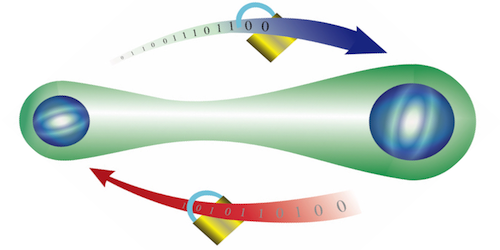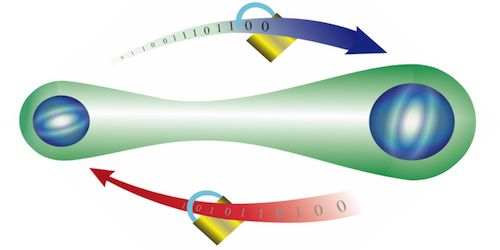One-Way Quantumness
Entanglement is the most familiar example of quantum “nonlocality”: a particle can appear to instantaneously affect the state of a distant particle with which it is entangled. However, quantum correlations can lead to other nonlocal effects beyond simple entanglement, which physicists don’t yet fully understand. Two independent studies have now provided experimental evidence for one such effect, known as one-way quantum steering, which could potentially lead to practical quantum information protocols.
Quantum steering describes the ability of one party (Alice) to “steer” the states of a remote party (Bob) by performing measurements on her half of an entangled set of particles. According to theory, steering can be directional: there are situations in which Alice can steer Bob but not vice versa. Previous experiments hinted at the possibility of this one-way steering, but only worked for a restricted class of optical quantum measurements. The teams led by Chuan-Feng Li at the University of Science and Technology of China and Geoff Pryde at Griffith University, Australia, have now demonstrated one-way steering for general types of quantum measurements.
Guided by theory, the two groups designed optimal two-photon entangled states for steering and developed different methods to test steering by verifying that the correlations between Bob’s and Alice’s states satisfy certain inequalities. Using similar experimental setups, they created conditions in which only Alice could steer Bob. The Griffith team proved that this one-way steering would occur even if an arbitrarily large number of different measurements were to be performed. The demonstrated asymmetry of steering could enable quantum key distribution for cases in which entanglement alone is not sufficient. For instance, if one of the parties cannot trust her own devices, so that entanglement verification is useless in one direction.
This research is published in Physical Review Letters.
–Matteo Rini





